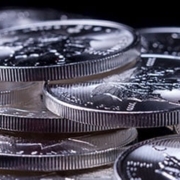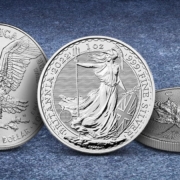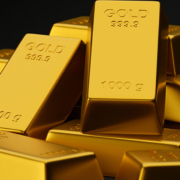Exploring the World of Modern Silver Coins for Collectors and Investors
Silver and gold coins have historically been used as currency in many civilizations. Precious as they are, modern silver coins like the U.S. Mint silver coins, or the Canadian Maple Leaf silver coins carry intrinsic value as collectibles or investment means.
These coins offer a wide range of selections from a wide variety of mints all over the world, like the Perth Mint, the US Mint, the Royal Canadian Mint, the Royal Mint (UK), the South African Mint, the Austrian Mint, etc.
Naturally, they attract a host of admirers among numismatic (the study or collection of currency, including coins, tokens, paper money, medals and related objects, among the broader discipline of the study of money and other means of payment used to resolve debts and exchange goods) enthusiasts and history buffs alike.
Since these pieces of precious metals hold cultural significance, reflecting the heritage and traditions of the issuing country, while featuring national symbols, iconic figures, or commemorative themes, they make for rich and tangible links into history and the timeless tapestry of human civilization.
Why Did Silver Bullion Coins Stop Being Used as Currency?
Modern silver coins are still considered legal tenders (a form of money that courts of law are required to recognize as satisfactory when offered or “tendered” in payment for any monetary debt that extinguishes it) in the United States of America.
So, it is not entirely accurate to say that modern silver coins are not used as a form of transactional currency anymore at all, but their terms and conditions of usage have altered heavily.
Sanat Kumar, a chemical engineer from Columbia University, broke down the periodic table to show why gold has been used as a monetary metal for thousands of years, as per an article by the World Economic Forum.
It revealed the fertile grounds on which the idea of using (the five) precious metals (platinum, palladium, rhodium, silver and gold) as materials of wealth were germinated. People have used silver as money, but it tarnishes over time.
However, the truth remains according to Mining. com, that precious metals like silver are not currency not because it does not meet the economic definition of “currency” but because it will never be able to be used as a medium of exchange (which essentially is the definition of currency) in the modern world.
There are certain characteristics considered as yardsticks to determine “currency” in the contemporary economy. Precious metals like silver do not meet most of them: it is not very durable, is hard to transport, is easy to counterfeit, and is a variable store of value.
The Silver Standard: Evolution of Silver as a Deposit of Wealth
Silver coin values are volatile which makes them unfit for being used as currency but not as volatile as gold’s making them a cheap but high reward investment option especially in contemporary times.
Silver is considered a precious metal and is one of the most valuable materials on the planet. They are rare, and relatively non-reactive, so they won’t rust or explode when exposed to different substances.
Once societies began to form, and commerce became a more widespread phenomenon, a form of standardized currency had to be developed. With greater societal sophistication came the need for more regulation.
Mankind had already discovered metals of various types by this point, and metals were an obvious choice over stone, since they were much more durable and able to be purified and manipulated.
But the reason it remains so sought after is because over the millennia and centuries, despite moving into paper currency in most parts of the world, global economics was once tied to the silver standard, meaning that a certain amount of silver could be exchanged for a certain amount of gold, which equated to a specific amount of money – or paper currency.
However, silver supplies were so easily affected by the discovery of large silver mines that the currency became inflated and deflated too rapidly to make it reliable.
US Legislations in the Context of Modern Silver Coin Investment
- The Coinage Act of 1792- established the Mint of the United States and made silver legal tender. According to Wikipedia, the act authorized six silver coins, in value from five cents to a dollar, and prescribed their weights and fineness. The fact that the dime (ten-cent piece), quarter dollar, and other smaller silver coins contained less silver in proportion to the dollar helped keep them in circulation.
- The Coinage Act of 1873- made the dollar no longer equivalent to a set amount of silver. Done primarily to refrain mining companies from presenting their bullion at the mints and receiving it back, struck into silver dollars worth more as money than they were as metal, it helped erase the vulnerability of currency as per the variations in the price of precious metals.
- The Coinage Act of 1965- was passed in the context of an unforeseen and massive shortage of silver coins in circulation. Reasons being the expanding industrial demand for silver, courtesy the burgeoning manufacturing-based U.S. economy, as well as the rising demands from American households and other consumer entities, along with the hoarding of silver coins by numismatists.
Silver Coins for Collectors
The post-World War II era brought with it a war-fueled recession after which the US economy started booming. To combat this John F. Kennedy, the 35th president of the USA, passed the coinage act of 1965, releasing the famed Kennedy halves, which the public immediately hoarded, killing the motive behind it.
For collectors, the items of their desire are either an extension of their hobbies or their deepest interests, perhaps unlocking an integral portion of their personalities. We hope we have been able to demonstrate how collectible silver coins hold value.
Silver Coins for Investment
With the above in mind, we reach the last bit of our article. Here we will stop with our history lesson and simply demonstrate our top silver picks for both investment and collection.







